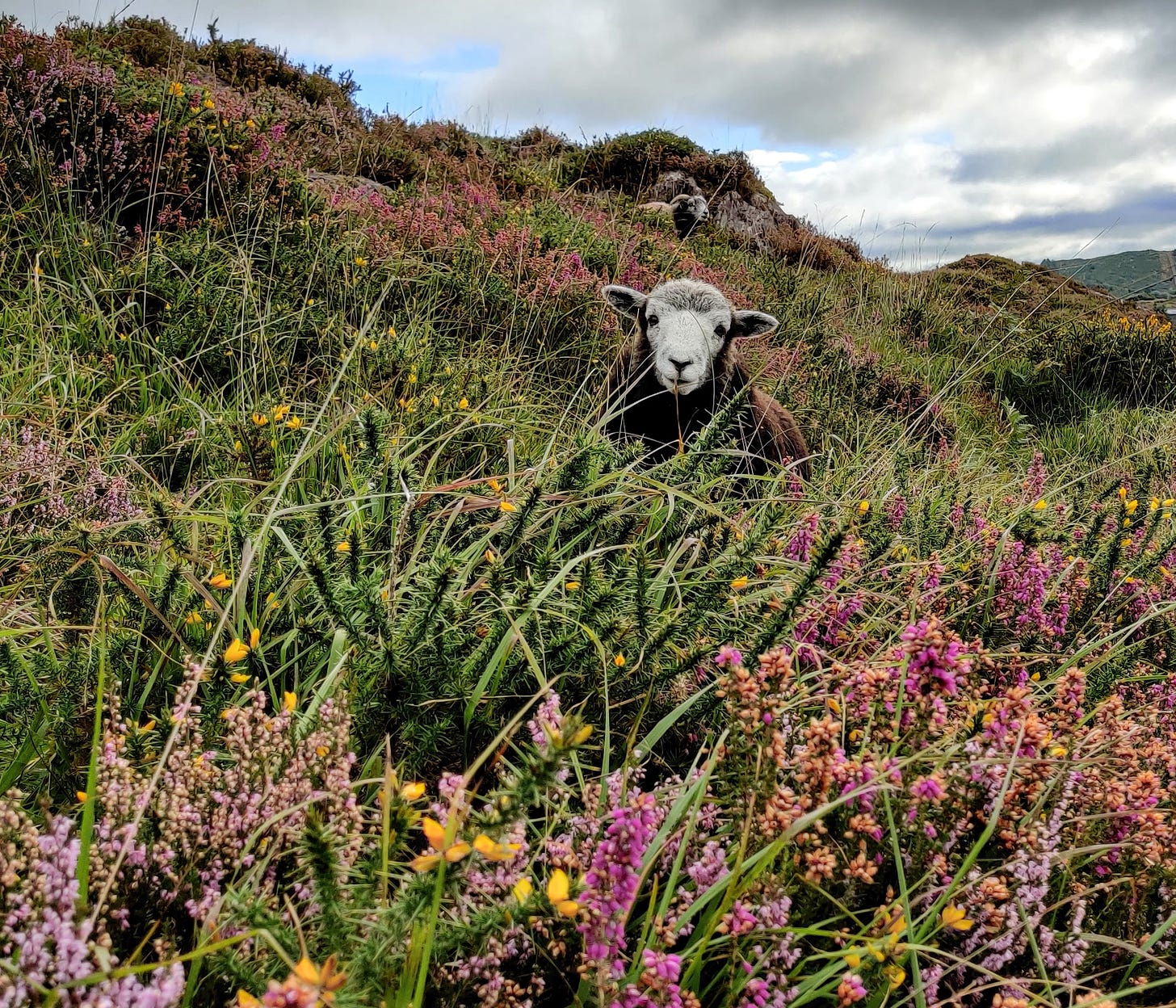Two farms. Both run a couple of hundred sheep and a handful of cattle extensively on mixed, rough, hill ground; a mix of high hill—open heath, semi-natural wet grasslands and rugged rock—and green fields carved into the more fertile, gently sloping lower ground. One follows a regular rotation system where all the land is grazed often by the cattle and then the sheep, with short rest periods in between, just long enough for the grass on the rough lands, which is limited to low growing species tolerant of near perpetual, tight grazing, to freshen before it’s grazed again, and the good fields, of bright, nitrate green ryegrass, are fed and cut for silage. It’s an extensive system that’s managed a little bit more intensively. The land is pushed to produce from every inch of soil and it shows: the heather and gorse on the rocks struggle to bloom; lone, straggly, windswept willows reach out of bare rock; the bones of upturned hedges lay where they were dumped, torn from the ditches to make …
Keep reading with a 7-day free trial
Subscribe to Wild Irish Farmstead to keep reading this post and get 7 days of free access to the full post archives.



